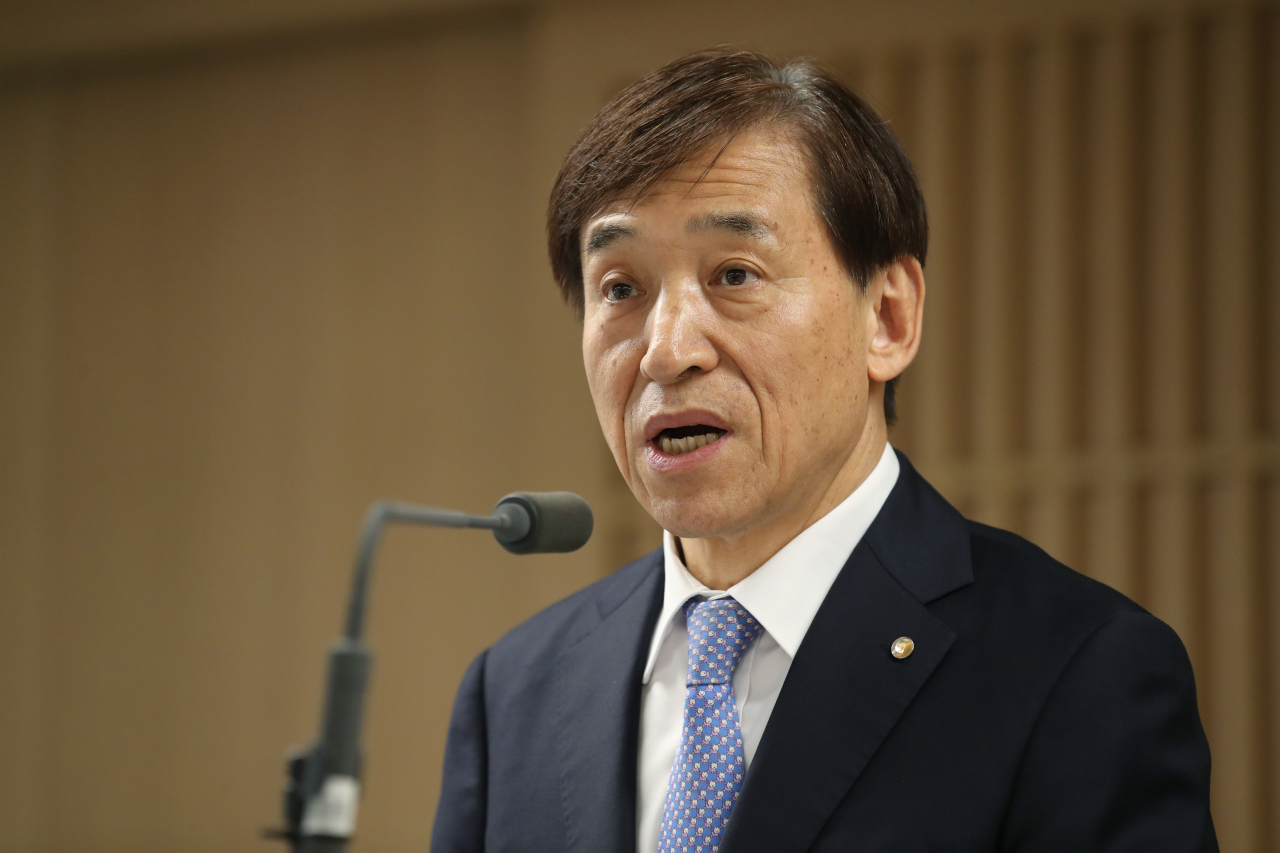BOK chief takes prudence over ‘rate cut’ possibility
Monetary policymaker remains defensive against ‘July easing’ scenario amid lingering uncertainties
By Bae HyunjungPublished : June 25, 2019 - 16:52
The chief of South Korea’s central bank on Tuesday underscored that the prolonged low inflation trend does not necessarily indicate an imminent cut of the nation’s key interest rate, while leaving the door open to “necessary measures.”
The monetary policymaker’s defensive remark came amid recently mounting market speculations that the central bank is likely to soon take further easing actions to deal with aggravating external conditions, mostly caused by the US-China trade dispute.
The monetary policymaker’s defensive remark came amid recently mounting market speculations that the central bank is likely to soon take further easing actions to deal with aggravating external conditions, mostly caused by the US-China trade dispute.

“The uncertainties affecting the growth path of our economy have grown visibly, amid the deadlocked US-China trade talks and the consequent contracting impact on global trade, as well as the delayed recovery of (Korea's) semiconductors sector,” Bank of Korea Gov. Lee Ju-yeol said in a press conference.
“While demands remain weak, downside pressures on prices are expected to persist both in supply and policy perspective.”
The press event was held to deliver the latest updates on the nation’s progress regarding its price stabilization target.
In December last year, the BOK maintained the inflation target at 2 percent on-year and eliminated the application timeline in order to keep a mid and long-term watch on the market, following the practice of other central banks in developed economies. It also decided to hold regular press briefings on a biannual basis to review the price index updates and to enhance communication with the people.
“The on-year consumer price increase from January to May this year stood at 0.6 percent, a steep fall from the 1.7 percent marked in the second half of last year,” Lee said.
“This falls substantially short of the target figure of 2 percent.”
The downside pressure on the supply side was mostly observed in petroleum goods and agricultural products, while the government’s expansive welfare programs added further to the depreciation in the policy perspective, Lee explained.
The on-year inflation for petroleum goods reached minus 7.6 percent in May, dipping from 8.3 percent a year earlier, reflecting the slowing oil price uptrend and Seoul’s temporary cut on fuel tax. Agricultural, livestock and fisheries products also saw a drastic fall in on-year inflation, from 6 percent to 0.5 percent during the same period, amid favorable weather conditions and excessive supplies, data showed.
The on-year inflation for public services turned to minus 0.3 percent from 0.1 percent a year earlier, taking impact from the government’s series of welfare programs in the education, medical and telecommunications sectors.
“(Not just Korea but also) other key economies around the globe have been faced with low inflation, a phenomenon partly attributable to structural changes such as globalization and the expansion of e-commerce,” Lee said.
“Due to its open economy, Korea tends to be more affected by such a global trend of low inflation.”
But when it came to questions on whether the prolonged low inflation trend and stalled market situations will inevitably lead to an imminent cut of the nation’s policy rate, the governor was cautious.
“I understand that the market’s expectation for a rate cut has increased,” Lee said.
Earlier this month, the central bank chief apparently changed his policy tone and inched toward possible easing, citing the need to take “appropriate measures according to the change of external conditions.”
Mounting speculations on a possible key rate cut -- as early as in July -- grew further as the US Federal Open Market Committee last week showed signs of a rate cut in the near future.
“It is true that external conditions have lately developed in an unfavorable direction (for the Korean economy),” Lee said.
“But as the level of uncertainty is still very high, we need to keep watch on key progresses, including the outcome of the US-China summit slated for this week and the real economy indexes to be announced (later this month).”
The BOK’s rate-setting Monetary Policy Board is to hold its regular meeting in July and review its decision on the base interest rate.
“One of the dilemmas for the BOK is that its purpose of establishment is not only price stabilization but also financial stability,” Lee said.
“We indeed perceive that the economy is facing challenges (but there are other factors to be put into consideration). It is not that (the BOK) is overlooking the direction of the economy.”
Since the global financial crisis, many central banks across the world have altered their statute to specify that the financial market stability is crucial for the soundness of the real economy.
By Bae Hyun-jung (tellme@heraldcorp.com)








![[Graphic News] More Koreans say they plan long-distance trips this year](http://res.heraldm.com/phpwas/restmb_idxmake.php?idx=644&simg=/content/image/2024/04/17/20240417050828_0.gif&u=)
![[KH Explains] Hyundai's full hybrid edge to pay off amid slow transition to pure EVs](http://res.heraldm.com/phpwas/restmb_idxmake.php?idx=644&simg=/content/image/2024/04/18/20240418050645_0.jpg&u=20240419100350)





![[From the Scene] Monks, Buddhists hail return of remains of Buddhas](http://res.heraldm.com/phpwas/restmb_idxmake.php?idx=652&simg=/content/image/2024/04/19/20240419050617_0.jpg&u=20240419175937)

![[KH Explains] Hyundai's full hybrid edge to pay off amid slow transition to pure EVs](http://res.heraldm.com/phpwas/restmb_idxmake.php?idx=652&simg=/content/image/2024/04/18/20240418050645_0.jpg&u=20240419100350)

![[Today’s K-pop] Illit drops debut single remix](http://res.heraldm.com/phpwas/restmb_idxmake.php?idx=642&simg=/content/image/2024/04/19/20240419050612_0.jpg&u=)